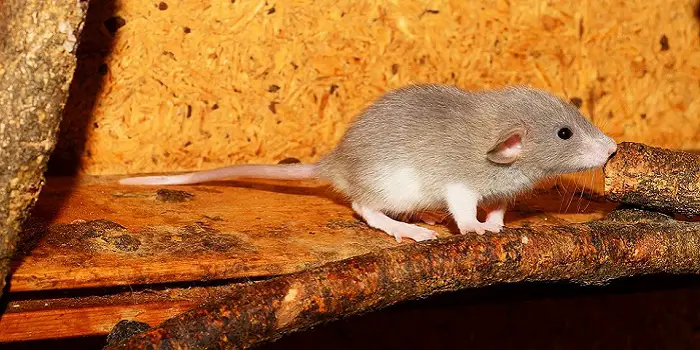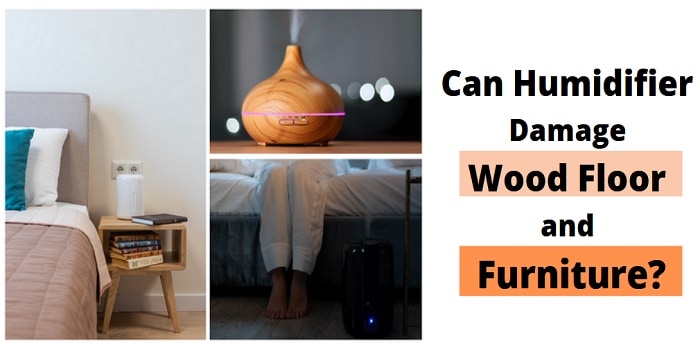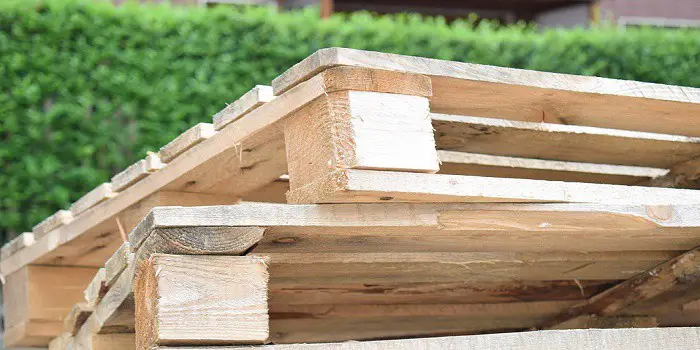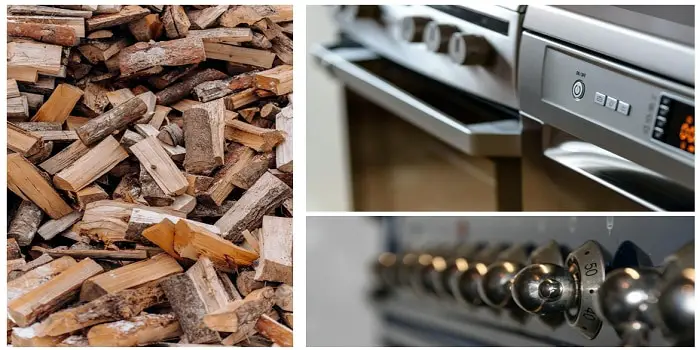
Pests like woodrat in your home can be aggressive and harmful to children.
For those who are unaware, these creatures are ratlike rodents native to North and Central America.
These rats get their unusual name from their propensity to steal and store items from home. Trash, as well as other metals, such as coins and keys, are favorite prey.
While woodrats (also called pack rats, packrats, or trade rats) prefer to nest outside your home, if given an opportunity, they do not hesitate to move inside and make their shelter in your attic or behind the wall voids.
Once they are in, it becomes hard to get them removed because of the food they get inside your home.
Wondering what they can eat, do they eat wood?
Woodrats are nocturnal, and they generally forage for food at night. Typically, they have nothing to do with “wood” in their name.
Outside your home, they feed on fungi, green vegetation, and plant materials (such as seeds, fruits, leaves, twigs, acorns, and inner wood bark).
However, inside your home, they can also eat human food supplies while continuing to feed outside.
Desert woodrats are both herbivores and granivores. Their diet consists of mesquite beans and leaves, juniper, cacti parts, creosote bushes, thistles, Ephedra plants, Mustard plants, sagebrush, and buckwheat.
Some of these desert woodrats will also consume other greens, seeds, fruits, acorns, and pine nuts.
When they find their food, they usually drag it to their den or a corner that is safe for them.
Signs of Woodrats
Your home is the best place after the garden where fury rats/woodrats have their holes to stay.
They mostly live in corners of wooden furniture and holes in the garden, and they bite into woods and corners of doors to create a place for them to enter your home.
You know there is a sign of concern if you see the rat droppings all around, if your upholstery and paper are bitten in pieces and if your corners are converted to woodrat nests.
You can also find that the woodrats are invading your home if you are aware of scratching sounds from the dark corners of your home.
What Do They Look Like?
You can tell a packrat or a woodrat by their rat-like appearance, with long tails, large ears, and large, black eyes.
While most packrats are about 30 cm long, nose to tail, there are adult woodrats that typically measure 15 to 18 inches from nose to tail.
Unlike other rats, the woodrat’s tail is densely haired and two-toned, brownish-black top and white bottom.
The rest of the creature is similarly furry, with long soft hairs in shades of brownish gray or cinnamon covering most of its body except for a patch of white fur around its belly and feet.
Why Do They Get into Your Home?
Tiny and pervasive, pests like woodrats are genius at finding ways into your home, vacation homes, cabins, and other outbuildings.
From crawling through tiny cracks to riding in on your pets, they will not leave willingly once they enter.
The best defensive way is to understand how they are entering and deny them entrance in the first place.
1- Stinky Garbage
The garbage piled up on the side of the house is a welcome beacon for scavengers not only like woodrats but also for raccoons and disease-carrying insects like roaches.
The main thing is sanitation, which is to be maintained without lethargy so that they do not come back to your home.
The buildings and its surrounding must be kept clean so that they do not find shelter and food near the house and move away to other places.
Close garbage bags to keep the contents inside and put them in outdoor trash cans with tight-fitting lids.
2- Rotten Wood
There are plenty of insects that are drawn to rotting wood.
Once they start dining on the rotting fascia over your patio, it’s a short trip to the interior of your home.
Not only does rotting wood attract some insects, but it’s also easy for animals like squirrels and rats to break through the rotting wood and invade the property.
3- Stacks of Firewood
Firewood piles inevitably become a source of shelter for rats, mice, insects, and even snakes.
Protect your home by keeping the wood at least 20 feet away from the foundation.
Also, you should keep the firewood free of critters by lifting it at least five inches off the ground when placing them in storage.
4- Tiny Cracks and Torn Screens
Mice and rats are talented at squeezing in through tiny cracks.
Fill holes and cracks with caulk or metal mesh to keep animals out, eliminate cold drafts and prevent the comfortable air inside your home from drifting out.
The screens on your windows and doors keep pests out, but they can crawl right in through tears and holes.
Keep the screens in good repair to protect your home from unwelcome invasions.

How to Get Rid of Woodrats in and Around Your House?
Remember that without proper woodrat control, these critters may threaten humans by spreading diseases; they may damage your products and spoil the food.
Yes, wood rats are considered to be dangerous if not appropriately dealt on time.
Here are the steps that you can take to deal with the situation and incorporate woodrat control:
1. Trap
You can place traps for woodrats on your property to ensure that these rodents do not damage them.
A standard rat snap trap can do the job and is more than enough.
Use good trap baits such as nut meats, bacon rinds, peanut butter, prunes, raisins, dried fruits, or biscuits.
2. Poison
If the traps don’t work, regular exercise to kill the woodrat must be imposed to ensure that such a situation does not arise.
To kill them, you can use rat poison readily available online or at pest control stores near you.
3- Predators
Major predators of the woodrat are owls, weasels, snakes, foxes, raccoons, and bobcats. These animals will typically kill and eat woodrats when they can find them.
Domestic cats and dogs may also kill wood rats if they come across them.
Some birds of prey, such as hawks, will also hunt woodrats. So, if you want to get rid of these rats on your property, you can employ some predators (like dogs, cats, hawks, etc.) and get them to work.
4. Hire experts
Appoint trained experts who would help to get rid of these rodents by setting woodrat traps and insecticides.
Many woodrat control organizations and enterprises perform the above list of duties to ensure that the place is not infested with rats and mice.
These organizations are known to do regular checks to ensure that the steps taken to combat the woodrat are successful and do not fall apart.
What to Do to Stop the Pack Rats Burrowing Under House?
Pack rats love to feed on vegetation and will chew on wood if they get the chance.
This means they are often found burrowing around homes and other structures in search of food, which can weaken your home foundation over time.
If you have a pack rat problem, you can do a few things to deter pack rats from burrowing around and under your house.
One is to ensure that no food or water source is available for them.
This means keeping garbage and pet food indoors and removing stagnant water sources from the property.
You can also try trimming back any overgrown vegetation, as this can provide shelter for the animals.
Finally, you can use the scents that pack rats hate.
For example, spray a mixture of peppermint oil and water around the perimeter of your property, or place cotton balls soaked in vinegar inside their burrows.
A combination of these methods will most likely be necessary to effectively keep pack rats away from your home.
Final Thoughts
Many people worldwide are affected by woodrat-related issues in their homes.
They not only affect the walls, wiring, and furniture but can also lead to a series of health-related issues.
Once you understand how these critters get into the property, you can take steps to keep them out.
If necessary, invest in professional services to help you find the source and eliminate the problem.
Also, it’s good to ensure that your pets are well vaccinated to prevent them from getting harmed by wood rat bites.

Hi, I am Mark Garner a professional carpenter, woodworker, and DIY painter. I live in the small city of Peoria, Arizona as a semi-retired woodworker. I have started this blog with a simple motive to help you with my wood experience in this sector. If you like to know more about what I love doing and how it all got started, you can check more about me here.





